Kathmandu Durbar Square
Label : Top Attraction
Tags : Monument
Timings : 10:00 AM - 5:00 PM every day
Closed on Saturday
Entry Fee : Foreigners - NPR 1000,
SAARC country citizens - NPR 200,
Students - No Entry Fee
Ways to Experience this attraction
Kathmandu Durbar Square, Kathmandu Overview
The regal Kathmandu Durbar Square is one of the three Durbar squares in Nepal. It is also known as the Museum of Temples, as it houses over 50 temples in the square along with several palaces and courtyards. It comprises three squares - Basantapur Square, the central Durbar Square, and Hanuman Dhoka. Most parts of the Durbar Square are open to tourists.
While the southern part of the complex houses the open Basantapur Square area, the central Durbar Square area occupies the western portion. For many years, the former used to be stable, which housed royal elephants. Today, it is a site that houses souvenir stalls. In the northeast part of the complex runs the second part of the square. In this area, the entrance to the glorious Hanuman Dhoka Complex is planted, with a beautiful assortment of temples nestled behind it. The place is an active walkway that connects many streets together for the general public. Even though the durbar is no longer used for coronations, it is thronged by people during festivals like Dashain, Indra Jatra, Machhindranath Jatra, and Gaijatra. The entire Durbar Square complex was gazetted as a World Heritage Site by UNESCO in 1979.
Kathmandu Durbar Square has witnessed and received one king after the other as they sat and ruled over Nepal a long time ago, where new rulers were crowned while the steady beats of drums and trumpets filled the place. Even though the unfortunate earthquake of 2015 took its toll on the building and around half a dozen places within the premises collapsed, it has still retained its original glory.
Read More on Kathmandu Durbar Square
Glorious Past of Durbar Square
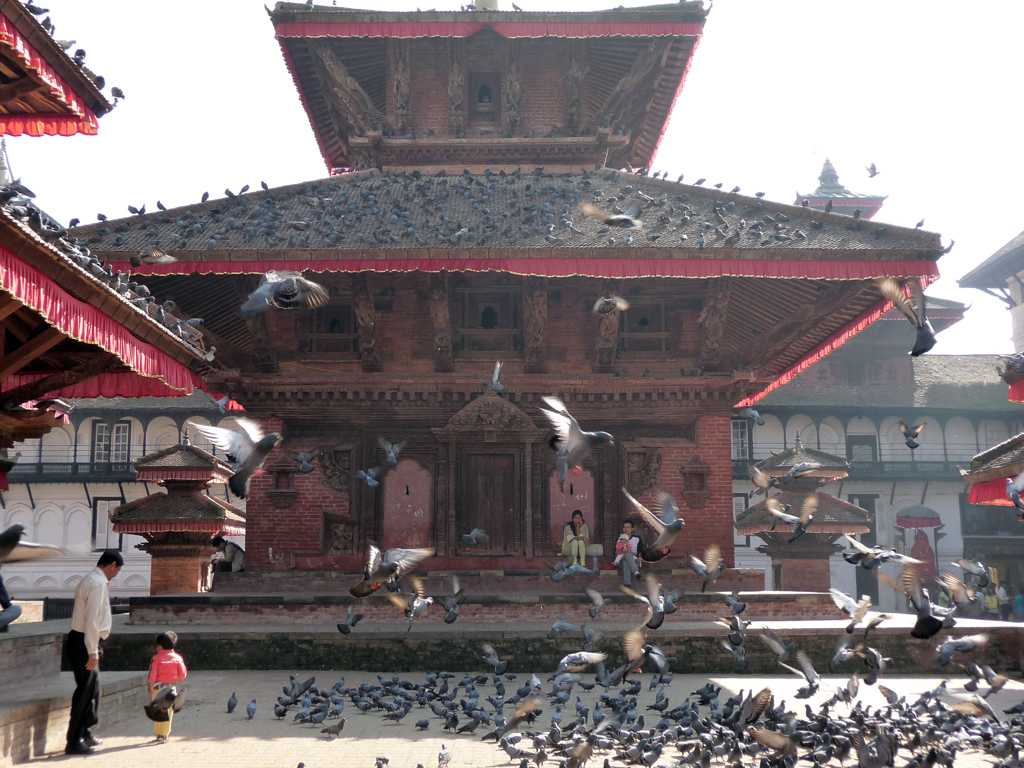
The Kathmandu Durbar Square used to be a ruling ground for the Malla Kings, who were the first monarchs to rule over Kathmandu after its independence. Later, it was favoured as a royal palace by Prithvi Narayan Shah, who had invaded the valley of Kathmandu as early as 1769. Following this, other subsequent Shah Kings, after succession, continued to rule over the country until 1896. Even though there is no written archival record which states the historical past of the Kathmandu Durbar Square, the construction of this palatial space has been attributed to the famed Sankharadev. It is believed that Ratna Malla, the first king of the independent city, had constructed the three-roofed Taleju Temple in the northern portion of the complex. The other temples within the premises that have been credited to him are the ones devoted to Kotilingeshwara, Jagannath, Mahendreswara, and Mahadev. At present, the Kathmandu Durbar Square still exhibits a wondrous, ancient atmosphere that spreads across five acres of flat land. With ponds encompassed by palaces, quadrangle courtyards, and temples housing antique paintings, the square complex is truly a gem in Nepal's bejewelled crown.
Major Attractions within Kathmandu Durbar Square
1. Taleju Temple
_20181005210542.jpg)
The holy sanctuary built by King Ratna Malla stands at a soaring height of 36.6 metres and is a shrine devoted to the Goddess Taleju Bhawani. A resplendent statue of the deity with four heads and ten arms adorns the centre of the temple while intricate metalwork elevates the charm of the place. Located inside the temple is a sanctum for the Kumari, the Living Goddess in Nepal.
2. Jagannath Temple
Constructed under the rule of the revered Pratap Malla, the octagonal Krishna Temple is solely devoted to Lord Krishna. It is said that this place of worship was built as a tribute to two of his late rulers. Beautiful pictures of Lord Krishna and two goddesses, who are believed to be his spouses, adorn the walls of this temple.
3. Trailokya Mohan Narayan Temple
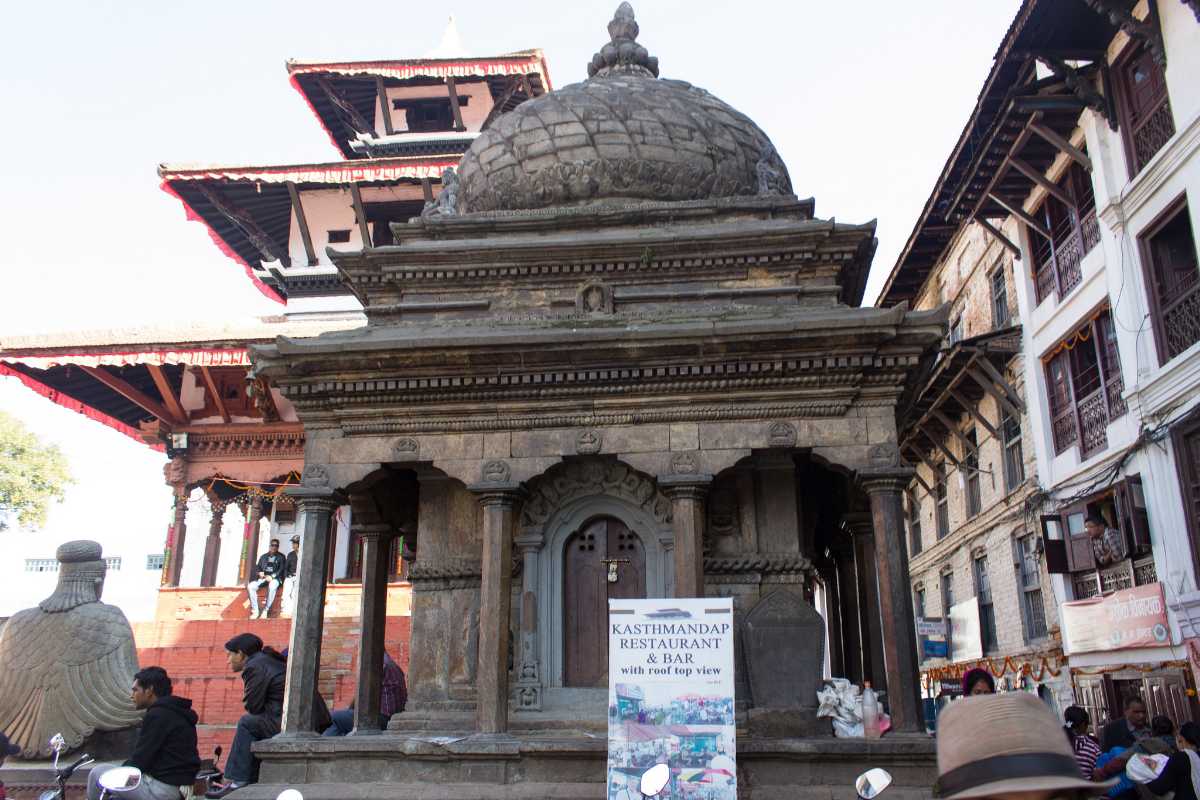
The five-roofed sanctuary within the complex is devoted to Lord Vishnu. With ancient paintings and images of the deity adorning the walls of the temple, the holy sanctum emits a supernatural aura which draws in many devotees.
4. Kalbhairav Temple
According to ancient mythology, Kalbhairav is a fearful incarnation of Lord Shiva. Standing in a grand and majestic form within the Durbar Square complex, the deity receives several visitors throughout the year.
5. Hanuman Dhoka
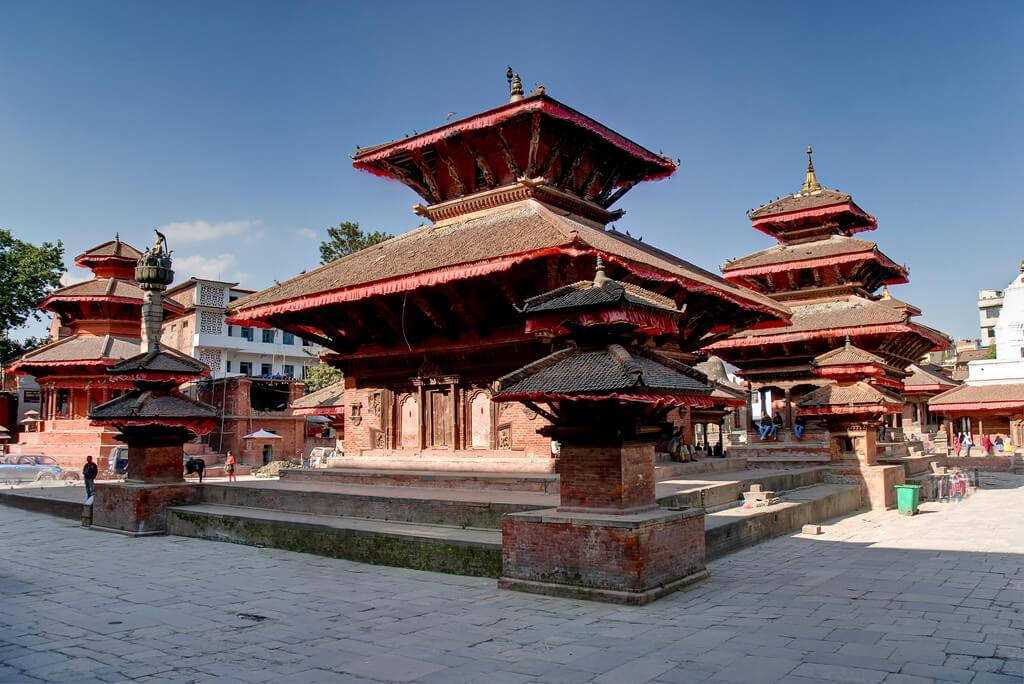
What may be considered as the prime attraction of the Kathmandu Durbar Square is the Hanuman Dhoka Palace Complex which houses a museum within it. Being used as a royal palace until 1886, the complex at present attracts hundreds of locals and tourists alike. This tourist spot offers an insight into the architectural style and the culture that was prevalent in ancient Nepal. The museum is a wonderful repository of the artefacts belonging to the Malla dynasty. In addition to it, this place is also home to the story of the unification of Nepal under the reign of Prithvi Narayan Shah.
6. Kumari Bahal
Kumari Bahal, the palace where the Kumari lives while she is the chosen Devi, is a beautiful ancient palace. It is a three-story traditional structure made of wood and red bricks with intricately carved windows, doors, and balconies which quite resemble a Buddhist Vihara. This structure was built in the mid-1700s by Jaya Prakash Malla and also houses a stupa with symbols of Goddess Saraswati and a huge chariot that is used to take the Kumari around the city during the annual festival of Indra Jatra. The presence of Kumari is believed to protect the community and the region. In fact, the major earthquake that hit Nepal in 2015 left only minor damage on the Bahal while the surrounding was impacted majorly. This is said to be some kind of a sign that locals believe is the grace or the power of the Kumari.
7. Singha Sattal
Singha Sattal or Silyan Sattal is a traditional rest house. Inside the Sattal is a shrine of Natyeshwar, the God of Dance. It was originally built in the 12th century.
8. Kabindrapul Temple
This 17th century wooden temple houses the God of Music. Kabindrapul temple is also known as Dhansa Dega.
9. Ashok Binayak (also called Maru Ganesh)
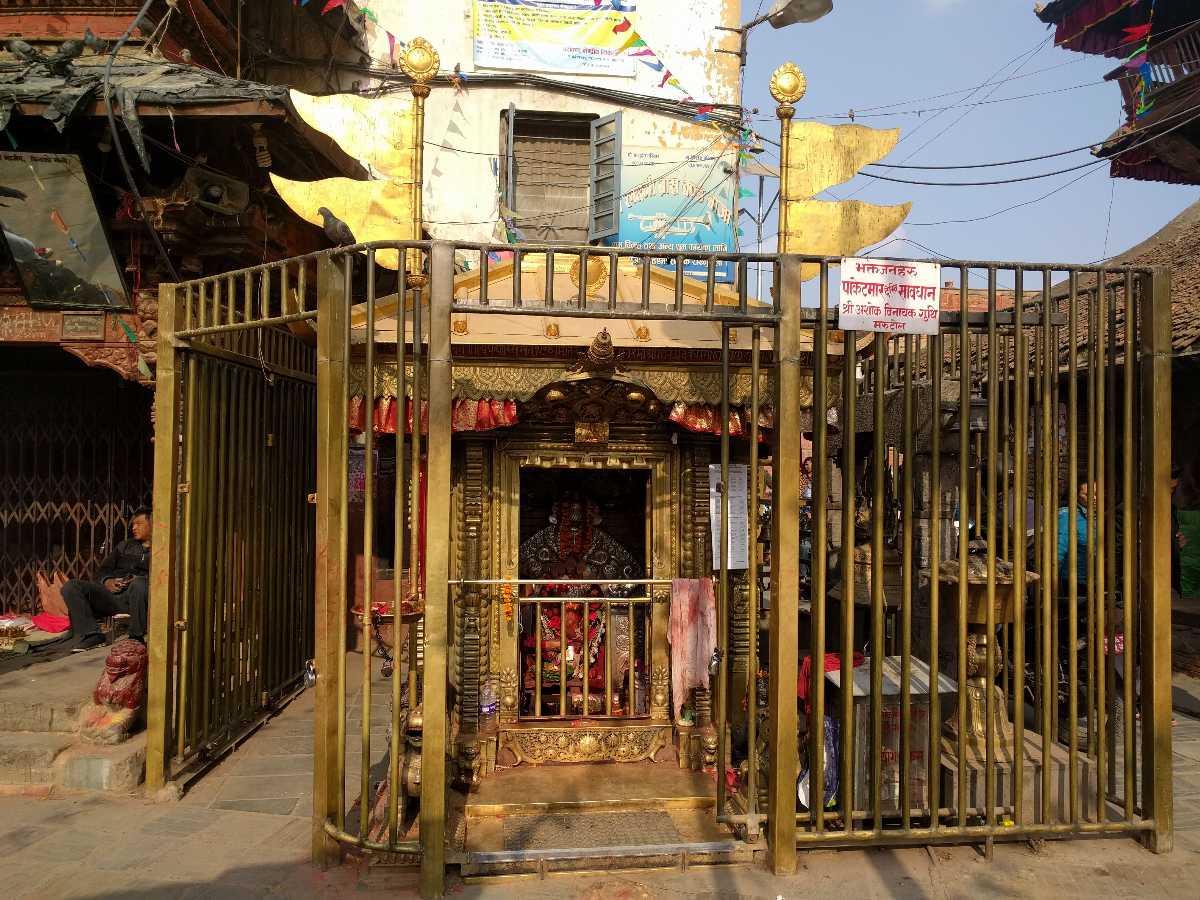
Ashok Binayak is a small Ganesh shrine located at the Eastern part of Kathmandu Durbar Square. The shrine is single-storeyed and has bars around it. The inside walls are gold-plated.
10. Gaddi Baithak
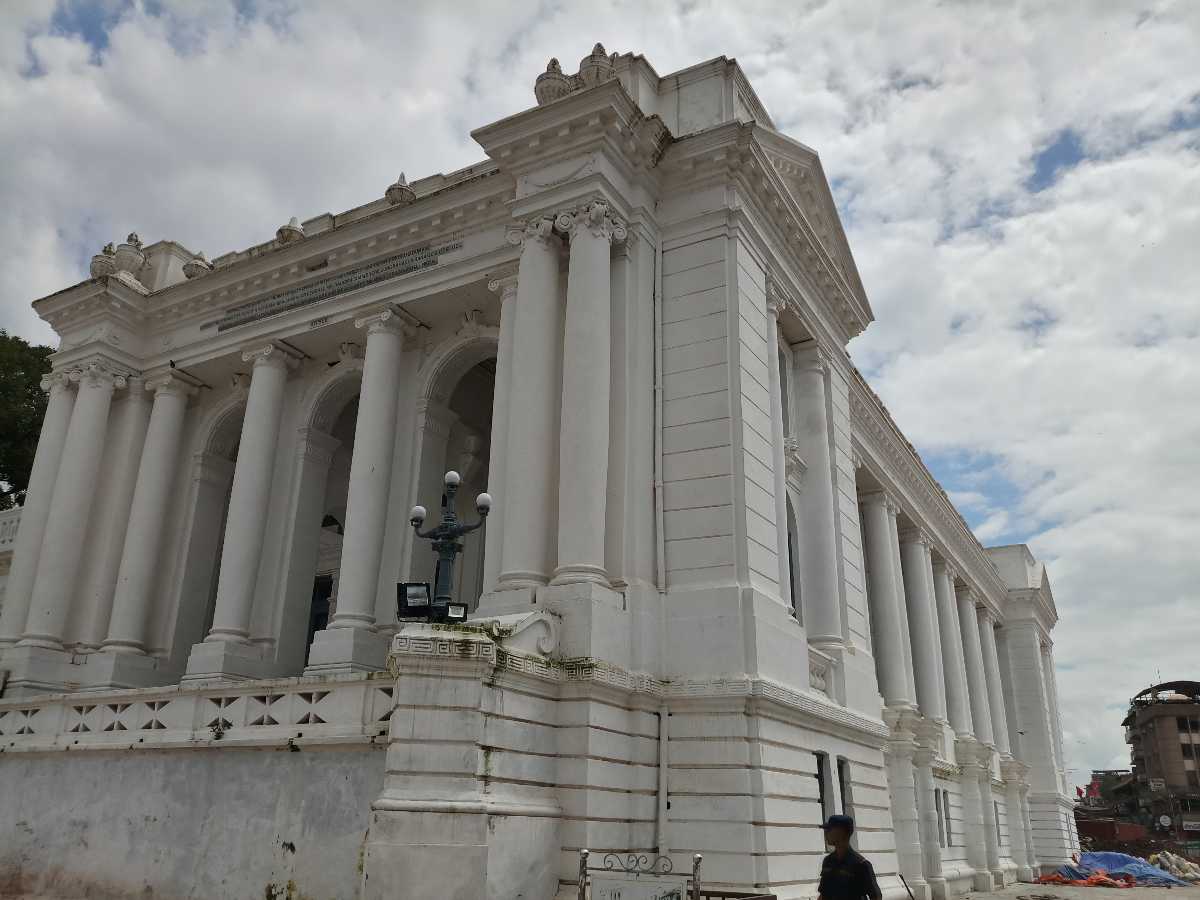
Gaddi Baithak is a building located right opposite the Kumari Ghar. The monument is now restored after the 2015 earthquake. It is a white coloured neo-classical building originally built in 1908 AD by Prime Minister Chandra Samsher Rana.
11. Kotilingeshwara Mahadev Temple
Kotilingeshwara Mahadev Temple is one of the most important monuments built by King Pratap Malla in the 17th century. The temple has a circular plan and three metallic circular roofs.
12.Shiva Parvati Temple
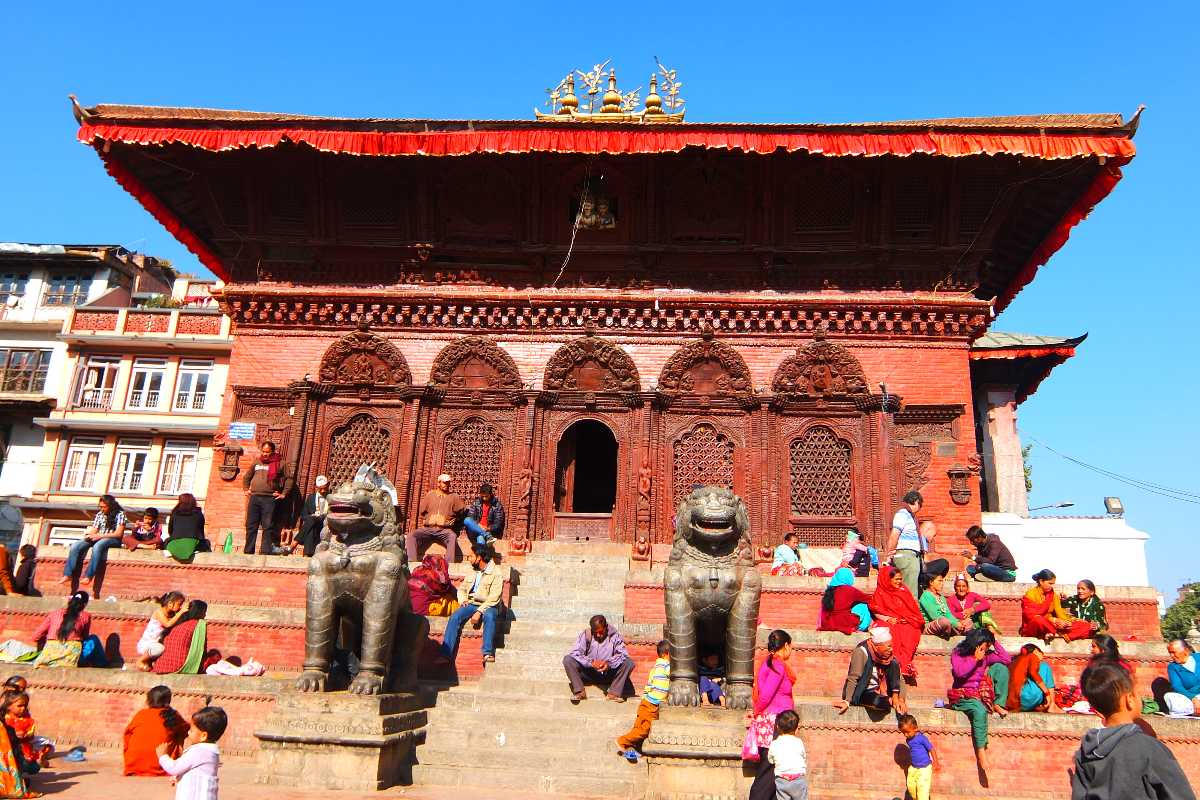
The glorious temple of Lord Shiva and his Consort Goddess Parvati, Shiva Parvati Temple is located in the religious area of Durbar Square. It is as important as the Kumari Bahal or the Kasthamandap and is often visited by pilgrims and tourists. Built in the 18th century by Bahadur Shah, every inch of the temple wall is covered in immensely intricate carvings.
13. Bhagwati Temple
The Bhagwati Temple located at Durbar Square was originally a Narayan temple. It was built by Jagajaya Malla in the eighteenth century. The Narayan idol is believed to have stolen by Prithvi Narayan Shah and replaced by an image of Bhagwati.
14. Great Bell
The Great Bell was built by King Rana Bahadur Shah in 1797. This ornate bell is located next to the Degutaleju temple and is rung during the puja at the temple.
15. Degutaleju Temple
Degutaleju Temple is a part of the Hanuman Dhoka. It’s a triple- roofed structure and houses a shrine of Taleju, King Malla’s personal Goddess.
16. King Pratap Malla's column
King Pratap Malla’s column or Pratap Dhwaj is a stone pillar that had the King’s statue looking towards the Degutaleju temple. The pillar remains but the statue has broken down in the earthquake of 2015.
17. Indrapur Temple
As the name suggests, this temple is dedicated to Indra. However, inside there’s a Lingam, suggesting the temple is dedicated to Lord Shiva. There’s also a Garuda is the Southern side suggesting the temple is dedicated to Lord Vishnu.
18. Tana Deval Temple
Tana Deval Temple is located in front of the Taleju temple. The temple has three carved doorways and painted struts with the Mother Goddess. The temple is surrounded by a wall.
Victim of Natural Calamities
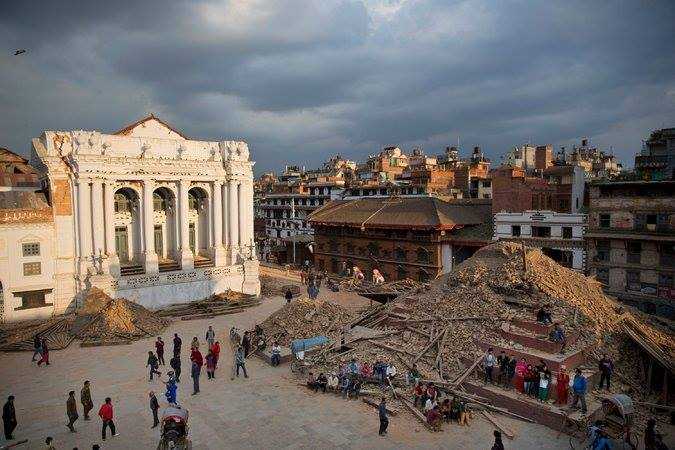
How To Reach Kathmandu Durbar Square
How To Book Tickets
Costs:
Foreign National: NPR 1000
SAARC Nationals: NPR 150
Chinese: NPR 1000
Nepalese: FREE
